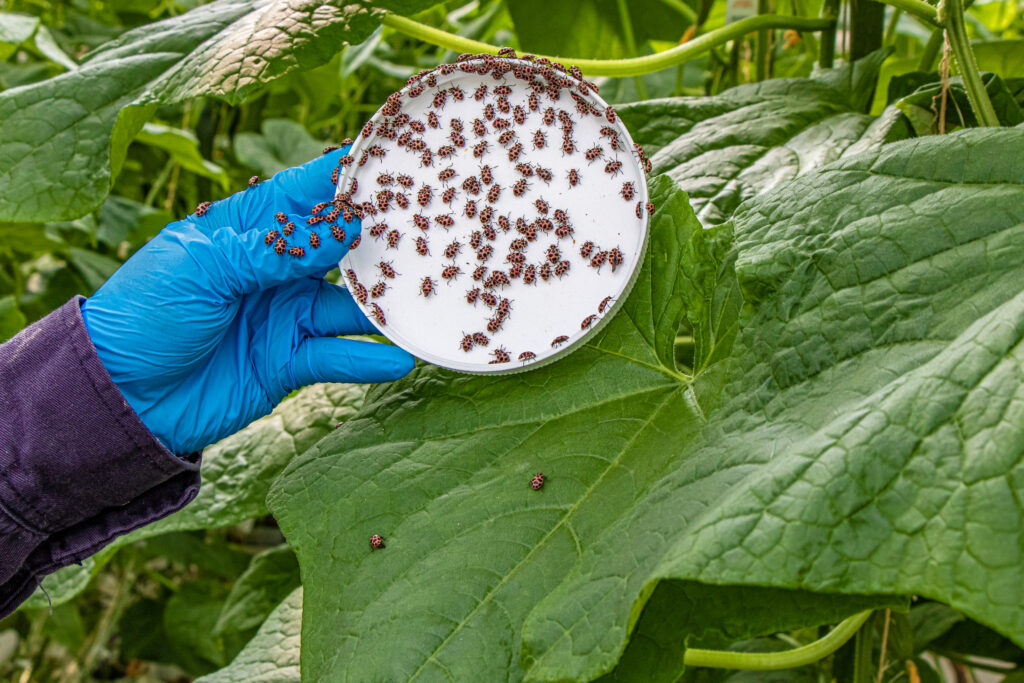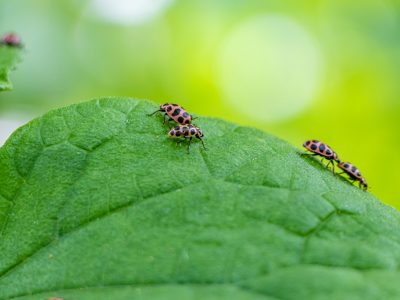Did you know that in organic agriculture, we use beneficial insects to keep our greenhouses free of pests?
It’s true! And one of our greatest allies is the spotted lady beetle – also known as ladybugs. With their shiny shells and distinctive spots, these tiny creatures don’t just bring good luck, they also help eradicate aphids and other unwanted insects that can cause great damage to crops like cucumbers. 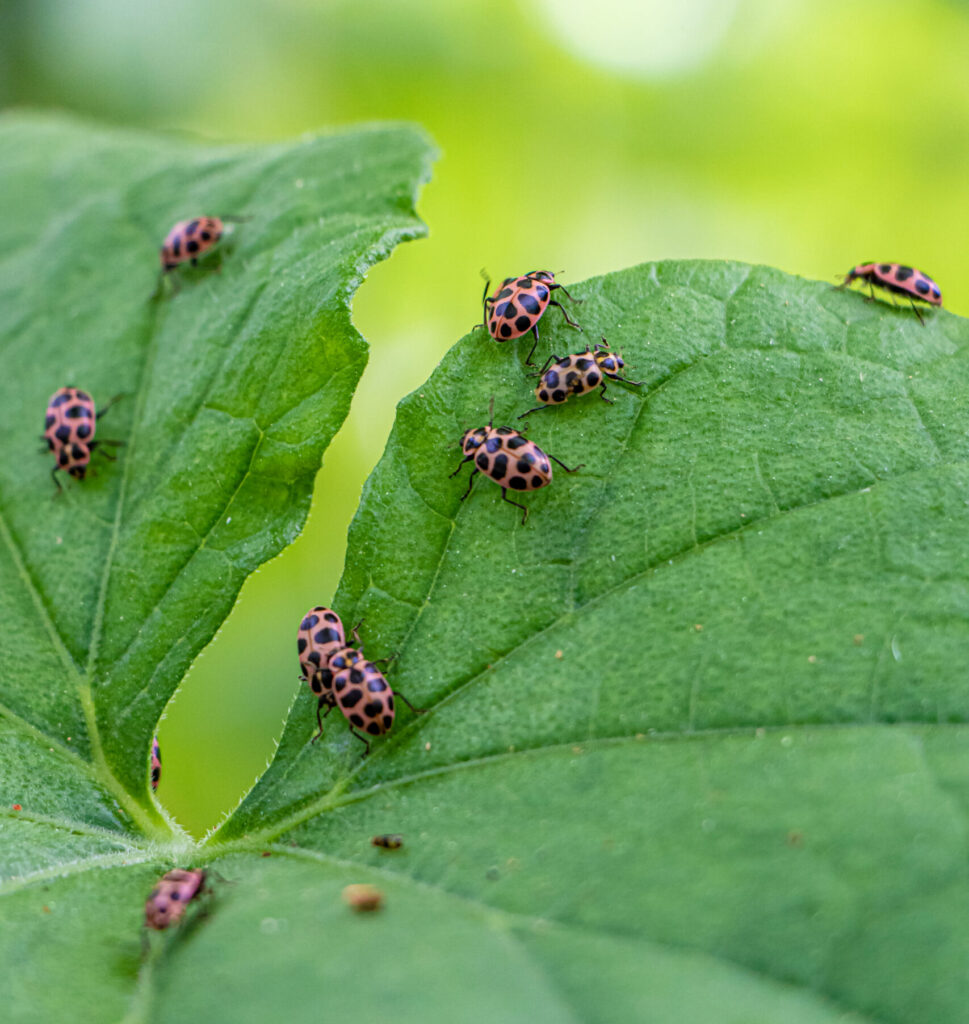
Pest outbreaks can bring serious problems to crops. For example, aphids can bring diseases that stunt cucumber growth, create spots on the leaves or cause other unwanted problems that make the product unmarketable. They can also severely reduce the yield of a crop, making it less productive.
In organic agriculture, spraying synthetic pesticides to get rid of pests is simply out of the question. That is why prevention of pest outbreaks is key, and we have to seek creative and ecologically friendly ways to solve pest problems.
To start, the greenhouse infrastructure is a great barrier against pests. Air pressure from within the structure also helps keep other critters out. Inside of the greenhouses, our biocontrol team sets up yellow sticky traps that draw in tiny pests like aphids and whitefly. They also spend a lot of time going plant by plant to detect and remove pests. However, they can’t do all the work. 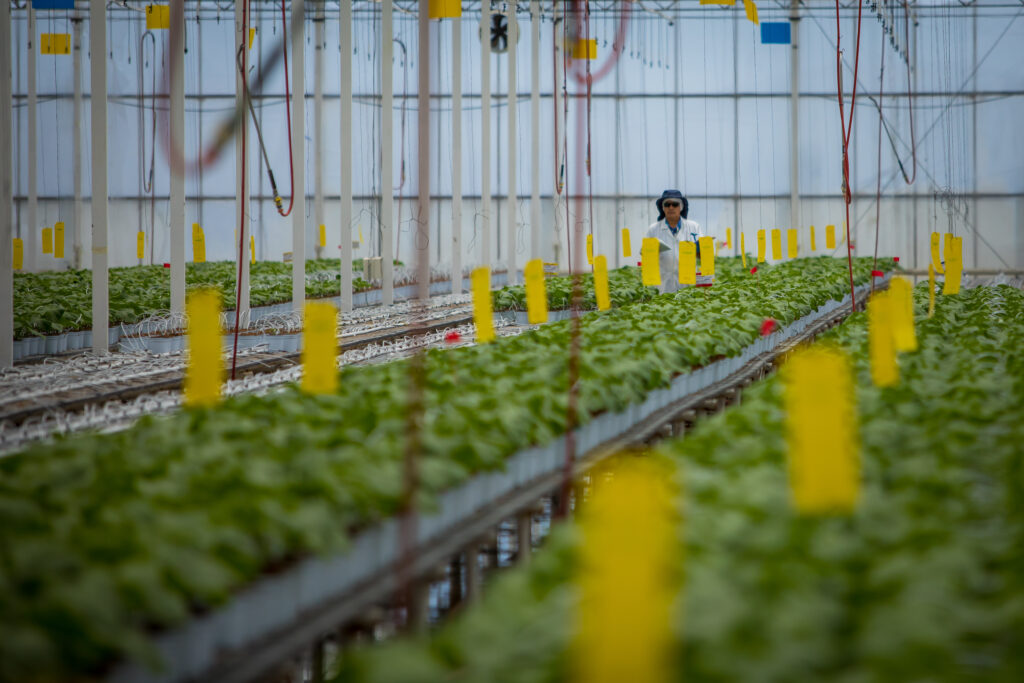
Why Ladybugs?
Ladybugs are special because unlike other beetles, they don’t eat the crop, rather, they eat other insects. The fact that they are omnivores make them very useful for organic production. A hungry adult ladybug can devour 50 aphids per day, and scientists estimate that the insect consumes as many as 5,000 aphids over its lifetime.
Ladybug Breeding
At our farms, our research and development team has dedicated a lot of time to studying these creatures, finding the most effective ladybugs species and breeding them in-house. Ladybug breeding is not a new practice. Many growers and home gardeners who grow crops like cucumbers also have set up ladybug colonies to help control pest populations.
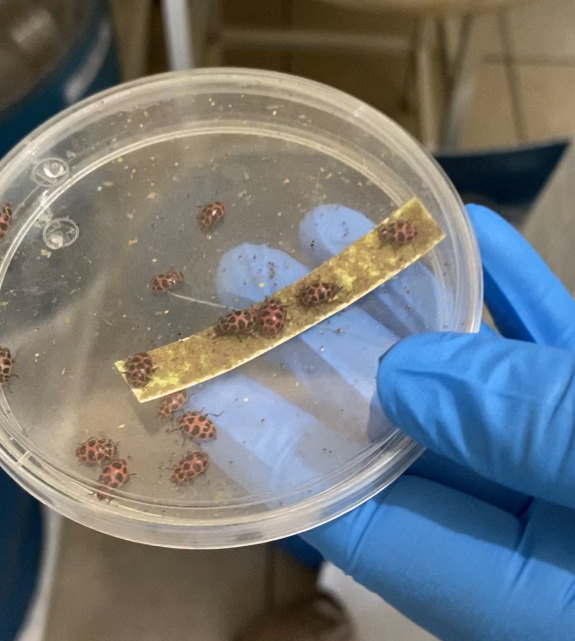 At our lab, our team also does this, but at a larger scale, producing over 35,000 ladybugs every week! They create a perfect environment for the beetles to mate and lay their eggs. Upon hatching, ladybugs go through a month-long growth cycle from pupa to larva and finally to the adult phase. At each phase, our team carefully separates the beetles, nourishes and cares for them until they are ready to be released. They are then distributed to our farms for use on long English cucumber and slicer cucumber crops. So far, they have been an effective tool against aphids, and not to mention create a beautiful ecosystem at our farms.
At our lab, our team also does this, but at a larger scale, producing over 35,000 ladybugs every week! They create a perfect environment for the beetles to mate and lay their eggs. Upon hatching, ladybugs go through a month-long growth cycle from pupa to larva and finally to the adult phase. At each phase, our team carefully separates the beetles, nourishes and cares for them until they are ready to be released. They are then distributed to our farms for use on long English cucumber and slicer cucumber crops. So far, they have been an effective tool against aphids, and not to mention create a beautiful ecosystem at our farms.
So next time you see a ladybug, remember, these creatures are helpful allies. Thanks to them, we can have healthy, thriving, and clean organic produce!